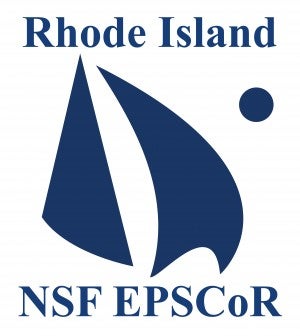
The cost of ocean acidification research just became significantly more affordable with the results of a study funded in part by Rhode Island NSF Experimental Program to Stimulate Competitive Research (EPSCoR).
Detailed in a newly published paper, Assistant Professor Andrew Rhyne, Roger Williams University, and graduate student Eric Wilcox Freeburg, University of Massachusetts Boston, developed a more economical method for the precise and accurate control of pH levels in ocean acidification research.
The paper — titled “A comparison of two pH-stat carbon dioxide dosing systems for ocean acidification experiments” — sums up the importance of the findings: “This system will open up new avenues of investigation into one of the most significant threats to marine organisms, allowing more researchers to enter into this important area of study.”
Understanding the impact of ocean acidification holds critical value. The world’s oceans absorb 30 percent of all carbon dioxide (CO2) released into the atmosphere. Consequently, as CO2 emissions increase so, too, do the levels of CO2 in the oceans.
This shift initiates a series of chemical reactions to occur, increasing the concentration of hydrogen ions, making the seawater more acidic and cutting back on the abundance of carbonate ions organisms need to grow shells and skeletons.
These changes threaten the ocean habitat and its food web, coastal estuaries and waterways, and the world’s dependent economies.
Although research into the impact of ocean acidification focuses on different areas, scientists studying the implications face one common barrier —accurate control of pH in their experiments with an affordable system.
“Most of the studies use systems that are connected together, which eliminates the replication of data, or it costs a small fortune to set up individual control,” Rhyne said. “We developed a modular system that allows for a high degree of replication without the huge astronomic costs.”
Typically, the data cost runs about $1,000 per replicate, according to Rhyne. The newly published method drops the price to $400 per tank, he said: “Basically, it’s less than half the cost. You also get really nice precision. You can hold the condition, collect the data and log the data very precisely.”
And, the type of experiment doesn’t matter. This study was set up for fish larvae, but the system is applicable to any research subject.
Wilcox Freeburg explained, “Our methodology is distinct from much of the available literature, either because of feeding techniques, species choices, or life stage selection.”
He said the team’s results show something significantly different than what has been shown in literature to date, and the findings have the potential to kick off a new field of study.
Rhyne credited Wilcox Freeburg, the paper’s primary author, with achieving the breakthrough. The graduate student worked on the project for three years. And, like all science, the success did not come without a struggle.
“Literally, there were several points where we were ready to take a baseball bat and beat it into pieces,” Rhyne said. “We had to learn to control the gas and flow, power interruptions. Now, we have a blueprint. It’s been a long process, a slog to get through it, but that’s typical of science. It never works like it’s supposed to.”
More importantly, though, Rhyne said the project never would have come to fruition without initial seed funding from Rhode Island NSF EPSCoR. The EPSCoR funding allowed the researchers to gather the preliminary data needed to get the project running and secure a National Science Foundation (NSF) grant.
Wilcox Freeburg added, “Having the funds to bring in additional undergrads allowed us to run full time over the summer and give some great research opportunities to several students.”
Nine institutions of higher education in the state form Rhode Island NSF EPSCoR — Brown University, Bryant University, Community College of Rhode Island, Providence College, Rhode Island College, Rhode Island School of Design, Roger Williams University, Salve Regina University, and the University of Rhode Island.
The partner institutions work collaboratively to conduct groundbreaking research and develop academic talent to increase competitiveness in research and development, build a more capable workforce and fuel economic growth in Rhode Island.
By Amy Dunkle


 Rhode Island EPSCoR is funded by the National Science Foundation under EPSCoR Research Infrastructure Improvement Award #OIA-1655221 (Sept. 2017-Aug. 2022). Any opinions, findings, and conclusions or recommendations expressed in this material are those of the author(s) and do not necessarily reflect the views of the National Science Foundation.
Rhode Island EPSCoR is funded by the National Science Foundation under EPSCoR Research Infrastructure Improvement Award #OIA-1655221 (Sept. 2017-Aug. 2022). Any opinions, findings, and conclusions or recommendations expressed in this material are those of the author(s) and do not necessarily reflect the views of the National Science Foundation.